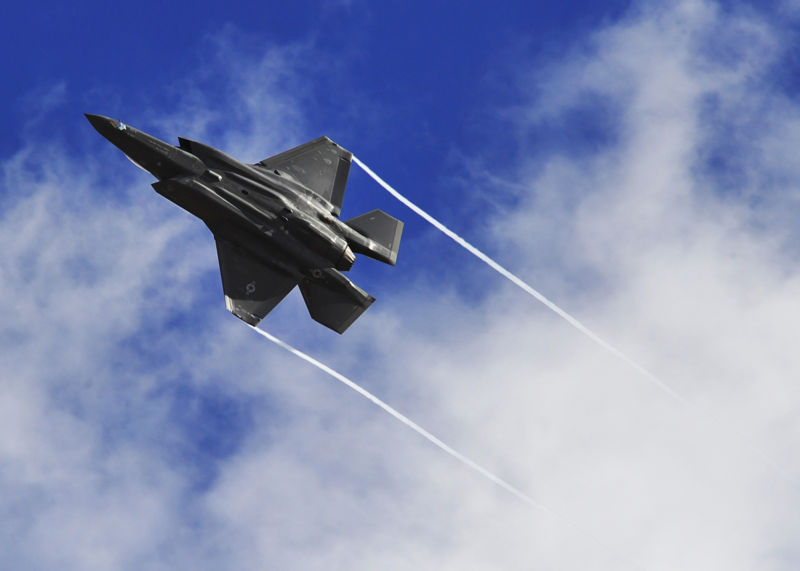Air Force clears F-35 to fly again—with caveats—after hypoxia scares
Ars Technica 2017-06-22

Enlarge / An F-35 Lightning II performs a maneuver Sept. 12, 2016 at Luke Air Force Base, Arizona. After a temporary grounding, the F-35 has returned to the skies at the base, but with some restrictions on how pilots fly the aircraft. (credit: US Air Force)
The F-35A has been cleared to operate once again from Luke Air Force Base, the primary pilot-training facility for the Air Force's newest fighter aircraft. The F-35 had been grounded at Luke since June 9, after five incidents over a month in which pilots experienced the symptoms of hypoxia (oxygen deprivation). However, that return to flight, which began June 21, comes with some caveats: pilots have been instructed to "avoid the altitudes in which the hypoxia-like incidents occurred," according to press releases by the Air Force and the F-35 Joint Program Office (JPO).
The F-35 JPO convened a "formal action team" to investigate the incidents after the aircraft grounding to work with the Air Force to investigate the hypoxia incidents. So far, the team has only managed to rule out a number of "specific concerns," including aircraft maintenance issues and procedures surrounding pilots' flight equipment. So while the aircraft are being returned to service, some restrictions have been placed on F-35 operations out of Luke. In addition to avoiding certain altitudes, the Air Force said that "ground procedures will be modified to mitigate physiological risks to pilots." The specifics of those changes were not mentioned in the press release.
The Air Force will also increase the minimum acceptable amount of backup oxygen aboard F-35As. And pilots will be "offered the option" of wearing sensors that will collect "human performance data" during flight to monitor for signs of hypoxia. The Air Force will also expand its physiological training for pilots to help them recognize and respond early to hypoxia symptoms.